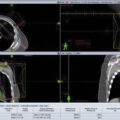There will be continual evolution of the management of breast cancer. All fields of medicine that touch patients who have or will develop breast cancer have changed and will continue to do so, currently on a much more frequent basis than we have ever seen in the past. Changes have occurred and will continue in all disciplines with increasing knowledge in prevention, genetics, diagnosis, treatment, and survivorship.
According to the National Institutes of Health Cancer Trends progress report published in April 2022, in the United States the total cost of treating female breast cancer in 2015 was $26.8 billion and in 2022 it was $29.8 billion, an increase of over 11%. From the perspective of the individual patient, in their initial year after diagnosis the cost was $34,979.50; for continuing care, the annual cost was $3,539.60; in their last year of life, it was $76,101.20. As providers who care for these patients, we must continue to ask if we are providing patients with the best quality and value that they deserve for these expenditures. Moving forward, the value of the programs we provide to patients will be an increasingly critical concern—are we providing the highest-quality, evidence-based, innovative, and cost-effective care for the patients under our guidance?
In the preceding chapters of this book, the history and current state of breast cancer management have been well reviewed. There has been extensive progress from historical unimodality treatment, with evolution toward evidence-based and integrated multidisciplinary care. The importance of clinical trials and the value of standardization of management based on evidence-based pathways cannot be overstressed. Cancer treatment is outrageously expensive, and the costs will continue to increase, but from the perspective of the patient and their loved ones, it is money well spent. From the perspective of society, we must continually make progress in preventing cancer, diagnosing it earlier when the chance for cure is greatest and the treatment should be the least expensive, refining therapy to provide the best care for the correct patient in whom it will have the greatest chance for success, creating supportive care to allow patients to successfully navigate the trials of therapy, encouraging the use of the best clinical trials to move the field forward, developing plans for life after cancer to encourage patients to return to a vibrant and successful lifestyle, and, finally, identifying those patients in whom further aggressive therapy is futile, and support and prepare them appropriately.
Surgery for breast cancer will continue to evolve into the future. Because of the rapid changes in the approach to breast cancer, there will need to be improved methods to keep surgeons and the entire multidisciplinary team alerted to these changes. This should reinforce the use of clinical pathways and multidisciplinary conferences and clinics. Although most breast cancer surgery is done by general surgeons, these patients will likely migrate to surgeons who evaluate and treat a larger volume of breast cancer patients. Certainly, the trends from radical procedures to much more conservative surgery have progressed slowly; however the transition to nipple-sparing mastectomies, conservative lumpectomies, sentinel node biopsies, oncoplastic techniques, and new biopsy and reconstructive techniques have occurred in a much shorter timeframe. These changes best occur with frequent multidisciplinary discussions, well-designed clinical trials, and thorough evaluation of the data. Although often presented at national meetings, it will become increasingly important for these multidisciplinary discussions to occur at the local and regional levels. Many improvements have come about by surgeon participation in clinical trials and a focus on local organizational excellence, such as National Cancer Institute-supported clinical trial groups and National Accreditation Program for Breast Centers participation.
Although we believe there will continue to be a reduction in the number of mastectomies performed, there will be increased involvement by plastic surgeons. Many breast surgeons are trained in oncoplastic techniques, but others will continue to collaborate with their plastic surgery colleagues to improve the appearance of a patient’s breast after cancer surgery. Advances in plastic surgery have resulted in improved postoperative appearance after reconstructive surgery. Improvement in implants as well as tissue transfer techniques have led to better, more natural-appearing post-treatment cosmesis. Techniques such as lymph node transfer and lymphatic channel reanastomosis have become more commonplace in the treatment and prevention of lymphedema, and we believe these will have an expanded role in the future. Similarly, it will be increasingly important for the plastic surgeon to become an integral part of the multidisciplinary breast cancer team whose services should be offered to patients undergoing major procedures for breast cancer.
Although we see movement toward universal screening and prevention, there will always be patients who procrastinate and present with later-stage disease. We hope and expect that this will become a smaller group in the future, but the field must still be prepared to deal with these patients appropriately. As we have seen, although surgery will most likely become less relevant in those patients who present with metastatic disease, it will still have an impact on those presenting with locally advanced disease. The patient who presents with extensive, even ulcerated, and necrotic cancers on the chest wall will continue to be a therapeutic challenge. Newer molecular therapies and enhanced use of hormonal manipulation have continued to give this group of patients extended survival when compared to the past; however society will need to find better ways to encourage patients to seek help earlier in the course of their disease. Innovative multidisciplinary care has come a long way, but patients will always need to be willing participants in their care to maximize their chance for cure and longevity.
Radiation therapy will continue to have a role in the treatment of breast cancer. As technology has advanced and creative treatment routines have become more commonplace, the historical nightmare of severe burns and long-term toxicity of treatments have been greatly reduced. For breast cancer, prone treatments to reduce cardiotoxicity, breath holding, and electrons to treat more superficial lesions have all been used to generate maximal treatment effect with limited toxicity. Creative planning will continue to evolve. There has already been a marked reduction in the length of treatment courses to deliver comparable radiation doses without a reduction in the chance for control of the disease on the chest wall and for cure. Routine whole-breast radiation can currently be safely administered in half the time that was required as recently as 5 years ago. Techniques such as interstitial radiation and intraoperative radiation therapy have evolved and have been shown to have appropriate value in highly selected patients.
Game-changing technologies will continue to be discovered. Although proton therapy allows very precise planning for treatment, its limitations of great cost and limited sites have not made it a consideration for breast cancer, and whether it will have a role in the future of breast cancer treatment remains to be seen. Treatment planning based on magnetic resonance imaging is in further evolution but has not been shown to have a major role in limiting breast cancer at this time. There is evolving technology based on positron emission tomography activity, which could provide benefit for appropriate patients in the future.
In addition, local therapy approaches, particularly for smaller lesions, such as microwave, radiofrequency ablation, and cryoablation, continue to be explored. Studies have suggested an immunomodulatory effect of ablative procedures in breast cancer. Whether they will play a major role in the future has yet to be determined.
The field of medical oncology will continue to evolve significantly. Although the use of chemotherapy has improved the cure rate of many patients with breast cancer, it has also created significant morbidity or even mortality. Better understanding of complications of therapy such as cardiotoxicity from anthracyclines, Herceptin, and other cancer treatment drugs is needed. Focus on a genetic predisposition to develop toxicity will improve prevention of side effects. Combinations of cytotoxic drugs will continue to evolve to create maximal cancer cell destruction with protection of normal cells. Precision medicine, the development of drugs directed toward specific genetic mutations within tumor cells, will continue to expand and become more refined. Although the cost of these new, often oral agents can be prohibitive, appropriate selection of patients who have the highest likelihood of a prolonged positive response can be quite dramatic. Similarly, harnessing real-world data to identify those mutations that should offer a response to a drug but do not must also be determined. Avoiding costly medications that will not be effective is an equally important part of the equation.
The National Comprehensive Cancer Network (NCCN) has provided a valuable reference source to select therapy for patients with a given stage of disease and tumor characteristics. Unfortunately, the selection of possible drug regimens is so vast that it can be counterproductive to appropriate drug selection. This is particularly true when trying to develop treatment for a large group of patients within a healthcare system—treating a significant number of patients according to evidence-based guidelines yields much more valuable information regarding the response to therapy. Large numbers of patients treated the same way is often the best method to truly assess the effectiveness of a given treatment. There are distinct advantages to well-designed, evidence-based pathways. Our personal bias is to select pathways determined by groups of both academic and community-based oncologists, which can be selected to prioritize clinical trials and then ordered based on efficacy, toxicity, and cost. We are quite wary of pathways determined by insurance providers, whose selection criteria are often prioritized by cost. Although appropriate consideration of cost is very important, we believe it should not be the driving force in determination of therapy unless it provides patients with the best chance for cure.
The importance of clinical trials cannot be overlooked. Well-controlled clinical trials have been largely responsible for the tremendous improvement in the management of breast and other cancers, and encouraging more patients to participate, particularly minority and underserved patients, should be a goal of all oncologists. The special characteristics of this group of patients needs to be a focus of clinical trials moving forward.
Immunotherapy, described by Ehrlich in the late 1800s as the magic bullet, has moved into a new place in cancer therapy. Combined with chemotherapy, or even as a standalone therapy often based on genetic testing, immunotherapy has been shown to significantly prolong survival even in patients with widely metastatic disease. As further refinement is accomplished, we anticipate greater use of this modality in the treatment of breast and other cancers.
Until cancer is ultimately eradicated, clinical trials need to be a mainstay of therapy. Unfortunately, less than 1 in every 20 cancer patients finds an appropriate clinical trial in which to participate, and all practitioners must work to improve that ratio. Some organizations believe that trials can only be performed at a centralized home site. Although this might be true for experimental phase I trials, most trials can be appropriately offered in the community—close to where patients live and where most patients prefer to be treated. Unfortunately, performing clinical trials carries an extra cost and burden of additional personnel to be successful, but this is a cost that many feel is worth adding to make progress in the field. Investment in clinical trials research is a critical need to move all cancer treatment forward. Much work needs to be done to make the necessary improvements to increase access and improve diversity and inclusion in clinical trials by government, pharmaceutical companies, insurance companies, and individual institutions in this quest for investment. Although the cost to develop new drugs can be quite high, the ultimate goal needs to be the eradication of cancer, and its continual impact on the individuals affected, and on society in general, must always be considered. All of us will be much better served by the elimination of this deadly disease.
As we look at the practice of oncology, we must be prepared for transitions in the workforce. Oncologists as a group are aging, and the current supply of younger oncologists is not keeping up with demand. In addition, as the complexity of the field continues to evolve, it is increasingly hard for anyone to keep up with the expanding knowledge base of new treatments that grow exponentially. We will need to see a greater reliance on advanced practice clinicians, nurse practitioners, and physician assistants as the number of patients continues to rise. When advanced practice clinicians are effectively incorporated into the multidisciplinary care model, they can increase patient satisfaction, accessibility, and productivity. In addition, the use of telemedicine with remote monitoring and facilities to work with home care teams staffed by Oncology Certified Nurse will be required to expand the reach to care for cancer patients.
Despite multiple successes and refinements in the past, what can be expected for the future? There will continue to be changes in all aspects of care for patients who have developed or are at increased risk of developing breast cancer. Diagnostic techniques will need to improve along with prevention studies. We will need to identify those patients who are developing or likely to develop the earliest breast cancers and be able to intervene in their course even before the cancers are clinically apparent. This will require increasing the depth of investigation into cancer genetics and carcinogenesis. Certainly, those patients at genetic risk to develop breast cancer should have availability of improved and increased screening to identify the presence of cancer as early as possible. Progress in cancer genetics will also help identify family members of cancer patients who may be at greatest risk for developing the disease. This will need to be done in the least invasive and readily available manner to make such screening available and cost effective. Trials looking for shed cancer cells in the blood are currently underway and could provide the potential to enhance early diagnosis. These should be followed closely.
The cost of cancer care has continued to rise to an unacceptable share of our gross national product. In addition to this toll nationally, the financial hardships caused to patients and their families leave tragic stories of financial ruin. As the human genome has been unraveled, there are increasing data suggesting that new genetic aberrations increase the risk to develop breast cancer. Currently patients with known genetic markers such as BRCA1 and BRCA2 may be offered the option of surgery (bilateral mastectomy) to reduce their risk of developing breast cancer. They may be offered oophorectomy to reduce their risk of developing ovarian cancer as well, but unfortunately these operations are not an absolute guarantee of a cure and take a significant emotional toll. Mastectomies do not remove all microscopic breast tissue, and although this procedure can markedly reduce the risk of developing breast cancer, it is not a 100% guarantee. In addition, patients with these genetic aberrations are at increased risk of developing cancer at other sites, in both females and males, some of which cannot be prevented with an operation alone. We expect advances in genetics and the cancer genome to be our best hope for cancer prevention in the future. As understanding of the genome increases and the increased use of viral vectoring or CRISPR technology can focus on individual genes or base pair anomalies, we will enter a more exciting era of cancer prevention long before tumor cells manifest themselves. Unfortunately, we are in the very preliminary stages of this technology, but we believe it will have a much greater role in the future. In the field of cancer, we can all be assured that change will be the only constant.
References
Stay updated, free articles. Join our Telegram channel

Full access? Get Clinical Tree








